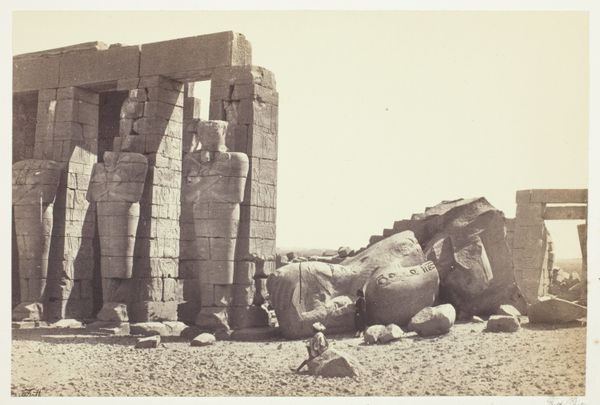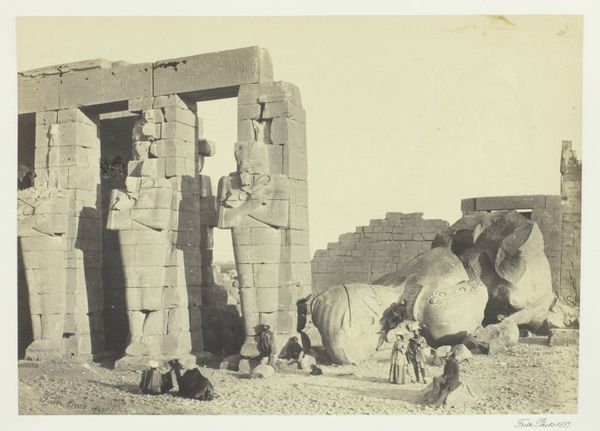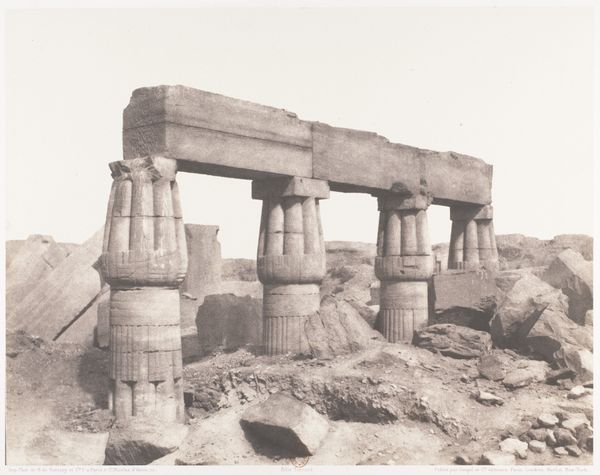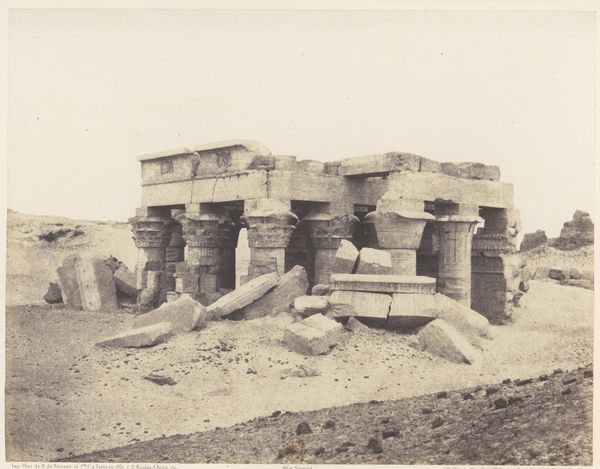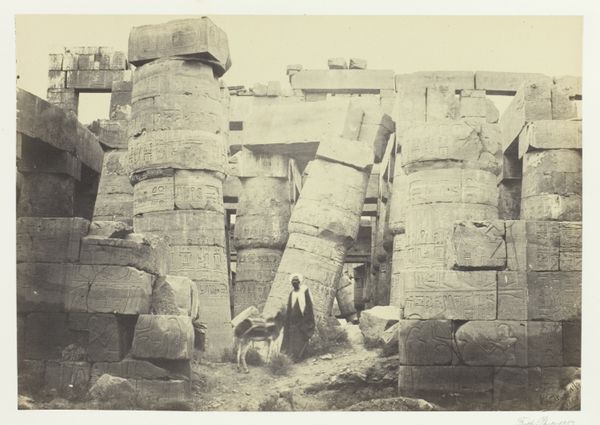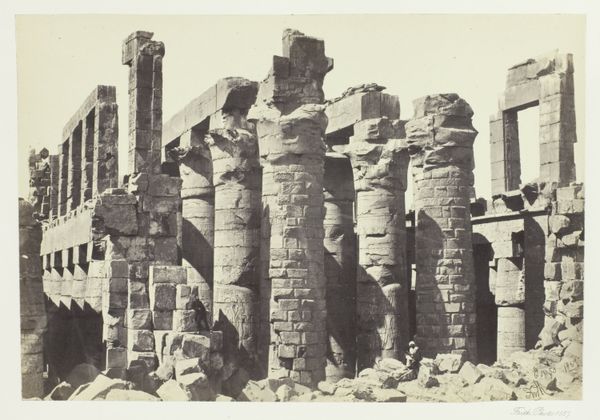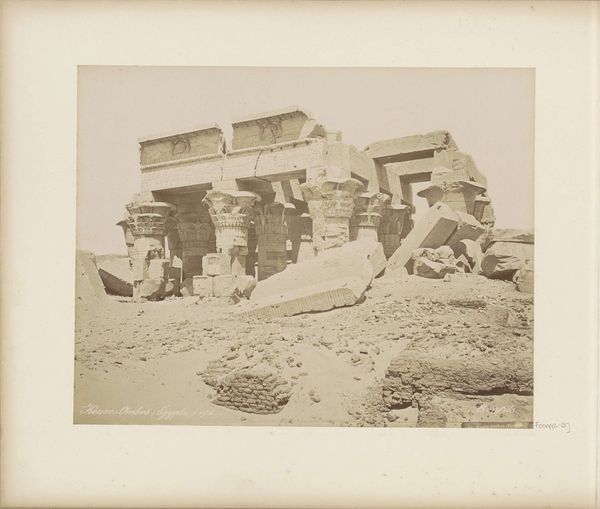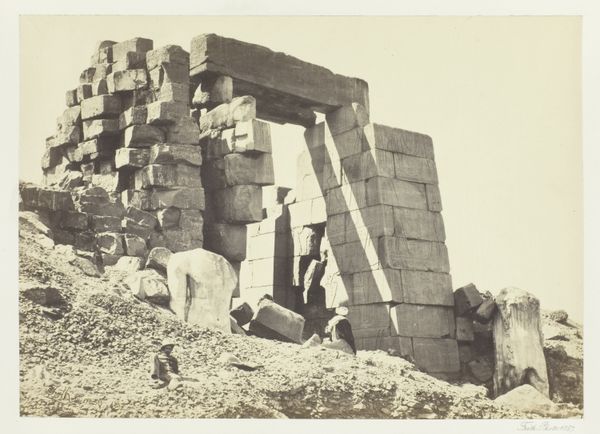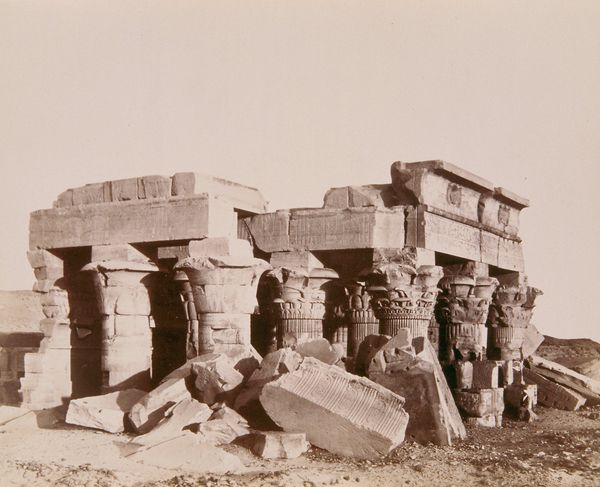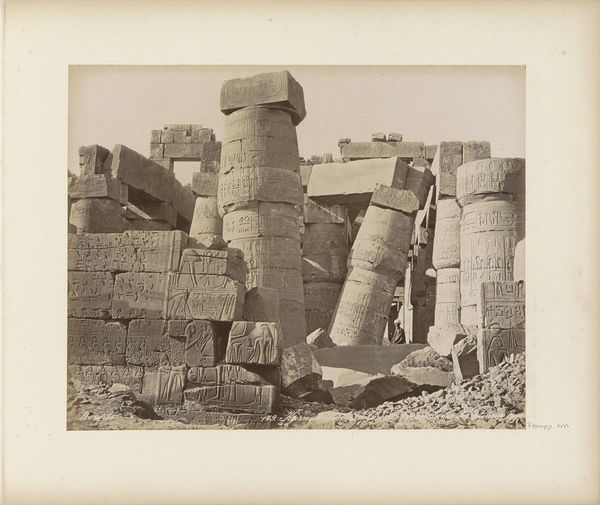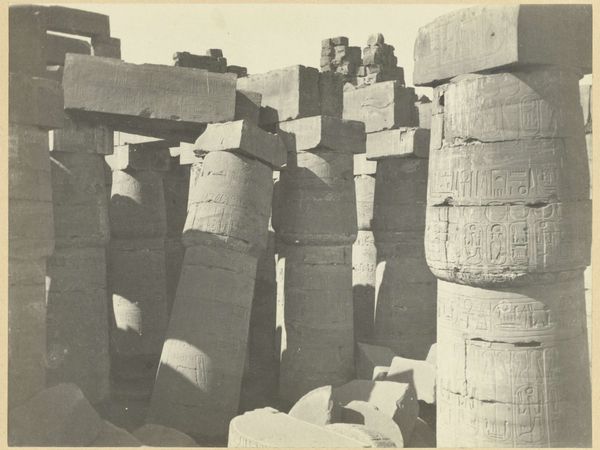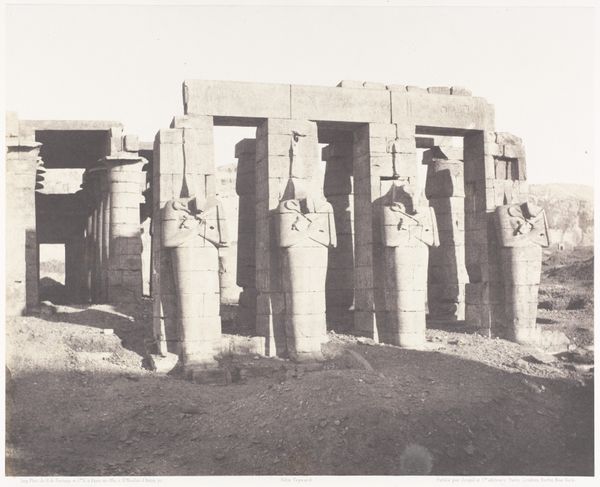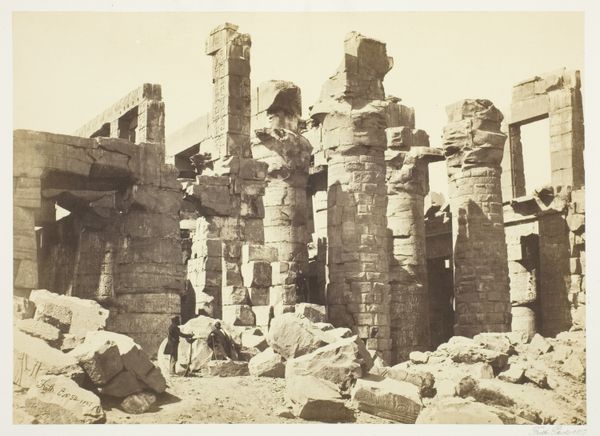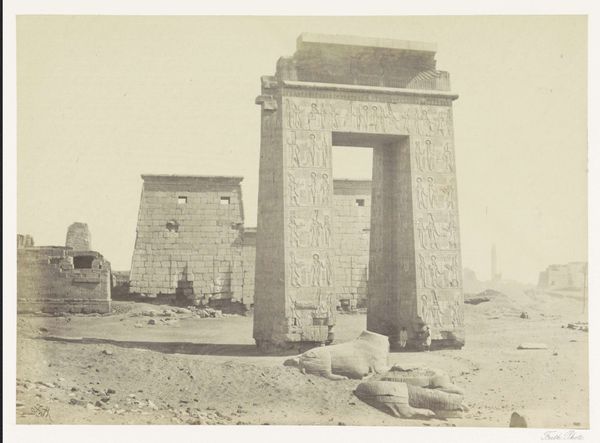
photography, site-specific, gelatin-silver-print, architecture
#
landscape
#
ancient-egyptian-art
#
photography
#
ancient-mediterranean
#
site-specific
#
gelatin-silver-print
#
architecture
Dimensions: height 161 mm, width 228 mm
Copyright: Rijks Museum: Open Domain
Curator: This gelatin-silver print, taken by Francis Frith before 1862, captures a section of the Granieten Pyloon (Granite Pylon) at the Temple of Karnak. Editor: My first impression is one of immense weight and historical burden. The fragmented architecture suggests not just the passage of time, but also a tangible sense of loss, of something monumental diminished. Curator: Indeed. Frith’s work documented the grand architecture of Egypt. Beyond its architectural significance, images such as this captured a sense of exoticism and grandeur, fueling the fascination with ancient civilizations during the Victorian era and feeding into colonial narratives. The site, already partially excavated, was presented as ready for discovery and study. Editor: Look at the carvings on the remaining walls. It seems less about conquest or the ruler's might than a plea to powers unseen. We see consistent depictions of pharaohs with their deities—more focused on harmony with cosmic forces, as were life and death in Ancient Egypt. What stands as ruins now speaks volumes. Curator: It’s a good point. Even in fragments, there's still an intent visible in how Frith chose his composition, directing the viewers' gaze into a history presented as distant, yet present, and readily interpretable. The ruins become both an aesthetic object and a site of potential political and cultural claims. Editor: Precisely. The light, too, seems to conspire to this end: harsh, yet revealing texture and cracks. And consider the figures. There seems to be two broken figures that look like they are made of plaster lying at the foot of the pylons; a sad scene and yet symbolic that nothing gold can stay. I keep wondering how this sacred space impacted local perception at the time of Frith's visit. Curator: A very interesting perspective to consider—how such iconic architectural sites were experienced by, or imposed upon local populations during that period. Something photographic records like this often overshadow. It's critical to look beyond the initial visual allure. Editor: Exactly! These symbols remain culturally potent; seeing how Frith rendered the Granieten Pyloon deepens the narrative we all carry within. Curator: Agreed. It invites further exploration into the interconnectedness of politics, history, representation, and our enduring fascination with lost civilizations.
Comments
No comments
Be the first to comment and join the conversation on the ultimate creative platform.
